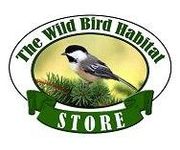
GETTING STARTED WATCHING BIRDS - A basic guide to birding just in time for the spring bird migration
Includes: Why go birding / selecting a field guide / free bird ID apps / selecting and using binoculars / how to identify birds
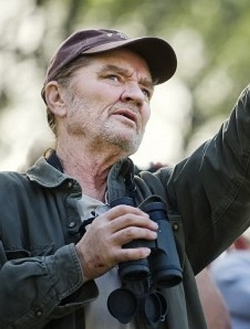
Birding watching and bird feeding are the fastest growing outdoor activities in the U.S. We hope this article provides you with basic birding information you need so you can gain experience on locating and identifying birds. There is nothing more exciting than the identification of a new bird you’ve never seen, or seeing “old avian friends” returning in the spring.
Bird watching allows you to spend time outdoors in the fresh air. You can enjoy it on your own or with a friend. It’s easy to begin watching birds since they are everywhere. No experience is required; just a few inexpensive tools are needed. Anyone, young or old, can enjoy it. It often starts many on a path of a lifelong experience that can grow into a passion. I often tell many that if they give it a try they might just become addicted to birding.
Where else can you observe the breathtaking diversity and beauty of such a large variety of animals. From your backyard, to a city park, a wildlife refuge, lake or wetland, even down on old country road. Birds are just about anywhere. North America alone has 917 bird species. Worldwide there are over 10,000.
WHERE TO BEGIN
The Field Guide
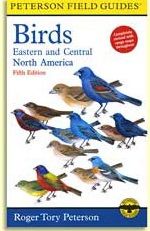
So where and how do you get started birding? First you’ll want to purchase a field guide. Birds of North America guides list all 917 bird species. If you live from the western Great Plaines to the west coast you'll want a Western Birds Field Guide. From the eastern Great Plains to the east coast you’ll want an Eastern Birds Field Guide.
There are many birding field guide to choose from. Some have a single photograph of every bird species, while others use drawing. The benefit of drawings they can highlight a particular bird’s “field markings”. Field markings are clues to bird identification. More on that topic later. Field guides also provide information about each bird species such as: range, migration, additional bird ID information and basic facts about the bird you see. Select the guide your most comfortable using, and that ii is easy to carry in the field on bird walks.
MORE TIPS ON SELECTING A FIELD GUIDE FOR BIRDS
BIRD IDENTIFICATION MADE EASY WITH TECHNOLOGY
Other options are smartphone, tablet, and computer apps. After years of birding I find these apps more convenient to carry and easier to use than a hard copy field guide. They show multiple photographs along with the songs and calls of each bird. Most even have wizards to help you identify a bird. Best of all those apps listed below are FREE DOWNLOADS from the Cornell Bird Lab.
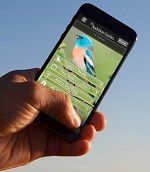
Do you have a smartphone, tablet, or PC? Here are the best birding ID APPS and website for identifying birds. Best of all they are FREE from the Cornell Bird Lab
MERLIN BIRD ID APP & MERLIN PHOTO ID BIRD APP
AUDUBON BIRD ID APP (Great app as a field guide)
BIRDNET (Identify birds by sound)
WHERE TO FIND BIRDS
To find reports of where birds are in your area from local birders. These apps will help you locate birds no matter if you are in your hometown or traveling around the country.
BINOCULARS
Binoculars will help you observe a bird more closely allowing you to note details and field markings that will help you to make an identification.
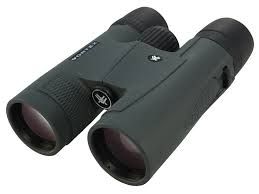
Binoculars are labeled with two numbers. For birding I’d recommend an 8X35 or 10X45. The first number indicates the magnification, for example: a number 8 means the object will be magnified 8 times. The higher the magnification the smaller the field of view. The second number indicates the diameter of the lens in millimeters and determines how much light the lens lets in. The more light the brighter the bird your observing.
As the size of the binoculars increase, example: 10X50 and up, it becomes difficult to focus on birds at close range, such as those viewed in your backyards. The larger lens size of the binoculars is heavier and uncomfortable to carry around. 8X42 to 10X42 binoculars are a standard size for bird watching.
When purchasing a pair of binoculars a good rule of thumb is get the best pair you can afford. The higher the price of binoculars is an indication of a better quality glass lens and lens coating. The higher quality the lens, the clearer the image. The better the coating the brighter the image will be in low-light conditions such as a woodland. Example: Economy binoculars have poor quality coatings on the lens and the glass can reflect back 30% or more of the light striking the objective lens. Thus, you may see more of a silhouette of the bird and not all the detail. Higher quality coating allows more light to strike you pupil resulting in a crisp, clear, bright images even in very low light conditions.
My recommendation for a good affordable pair of binocular that won’t disappoint is the Vortex Diamondbacks 8X42 or 10X42. They come with an unlimited warranty that covers all damages except loss. Prices range from $230.00 to $260.00. Vortex is the only line of binoculars we sell at the Wild Bird Habitat Store’s, and I am confident they will meet all your expectations.
HOW TO FOCUS YOUR BINOCULARS
WHERE TO START
You can easily get started right in your own backyard. Installing bird feeders can bring a variety of birds right to you without leaving your home. Adding a bird bath will bring birds into your yard that are not there to feed on bird seed It’s a great way to start identifying birds and using your binoculars.
But don’t restrict your birding to your backyard. Ponds, lakes, and wetlands along with prairies, grasslands, and woodlands and will produce many very interesting birds. From White Pelicans with a wingspan of more than 9 feet, to Yellow Warblers weighing less that ¾ of an ounce and everything in-between.
The avian calendar is fluid and bird species come and go in any given area every few months. There is spring and fall bird migration where short range migrants that travel a few hundred miles or long range migrants that may travel 5000 miles or more may appear at any time. There are birds you may only see once in your lifetime. We have summer birds, winter birds, and those that are permanent residents. For many birders it is like a treasure hunt, keeping a life list of all the birds you’ve seen while always looking for that rare bird to add to your list.
Parks and cemeteries can produce some exciting birds. Check your area for wildlife refuges and nature centers. Your state may have a birding trails system or other listed birding locations you can find online. There is never a shortage of locations to observe birds or a shortage of birds to observe.
Nebraska where I live is in the central bird migratory flyway and one of the top birding areas in North America. Along with Nebraska’s rich birding heritage there are more than 400 birds on the Nebraska Bird Checklist. We have both eastern and western bird species. Grassland birds, woodland birds, a high diversity of shorebird species. Sandhill Cranes, White Pelicans, Trumpeter Swans, American Redstarts, Harris’ Sparrows and so many more.
WHERE TO GO BIRDING IN NEBRASKA
To find a bird watching site in your area go to:
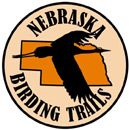
· Nebraska Digital Field Guide
QUICK GUIDE TO BIRD IDENTIFICATION
Where are you?
- Geographic Area (referred to as Range in bird ID books) – What birds to expect where you are regionally. Eastern or Western U.S. Northern or Southern U.S.
- Habitat – What kind of environment? Open water, riparian, prairie, marsh, woods, woodland edges, urbanized city, suburban neighborhood, or mixed area
- Time of Year:
- Winter – resident birds and winter visitors from the North
- Spring – transition time – resident birds, migratory summer resident birds, migratory birds passing through.
- Summer – nesting birds –resident birds, summer resident birds.
- Fall – transition time – resident birds, migratory birds moving south.
What to look for?
- Size – How does it compare in size to common birds?
- Sparrow sized? Smaller? Same size? Bigger?
- Robin sized? Between Robin & Sparrow sized? Bigger?
- Crow sized? Between Crow & Robin sized? Bigger?
- Re-tailed Hawk, Turkey Vulture, Eagle? Very large?
- Color – What is the predominant color/s?
- Black (Crow)
- Brown (Many sparrows)
- White (Egrets & Gulls))
- Red (Male Cardinal)
- Orange (Northern Oriole)
- Yellow (Yellow Warbler & Goldfinch))
- Blue (Blue Jay & Indigo Bunting)
- Grey (Catbird)
- Black & White (Downy & Hairy Woodpeckers)
- Shape – Is it thin or stocky? Odd shaped in any way? Unusual proportions?
- Behaviors – Do you notice anything unusual about how the bird acts?
- Flight – speed, straight (mourning Dove) or undulating (Goldfinch & woodpeckers), soaring (Broad-winged hawks & Turkey Vultures) , hovering (Kestrel - falcon)
- Moving on the ground – hoppers, walkers, stalkers, jerky motion
- Tree trunk huggers (woodpeckers,nuthatches and creepers)
- Feeding habits – divers, dippers, launch off a perch, stalkers, do they feed on aquatic life? Insects? Seeds/berries?
- Details – In close-ups do you see anything distinctive?
- Eye-ring or Eye-stripe (Carolina Wren)
- Eye color (yellow - Brown Thrasher, red – Red-eyed Vireo)
- Wing bars (Goldfinch)
- Bill color (Junco – pink bill)
- Leg or foot color (Junco –pink legs)
- Bill size (Large – Herons & Cardinals: Small – Warblers & Nighthawk)
- Crests – Blue Jay, Cardinal, Cedar Waxwing, Kingfisher, Tufted Titmouse
- Outer Tail feathers (white) – Juncos & Meadowlarks
- Rump spots – Harrier - Hawks & Flickers – Grey Catbird
FIELD MARKS
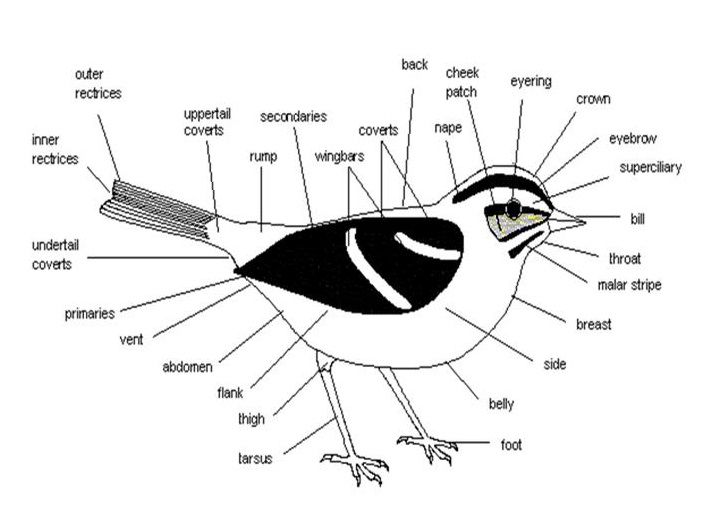
More Tips on HOW TO IDENTIFY BIRDS
- Songs – Can tell you they are there before you see them
- Full songs
- Warning calls
Notes – Complications to Consider
- Males and Females – are they essentially identical (Black-capped Chickadee, Blue Jay) or distinctively different (Cardinal, House Finch)
- Young adults - may take a few years to reach maturity and have adult plumage (Bald Eagles 5 years)
- Young or Immature birds – often look similar to adult female birds (non-distinctive)
- Spring vs. fall plumage – in the spring birds have colorful breeding plumage. In the fall and winter when in their basic plumage they are less colorful, more non-descriptive. In many cases during the fall and winter adult birds may appear to look more like immature birds.
- Rare birds do wander into Nebraska at any time of the year. More often in the spring and fall during migration.
When you want to take bird watching to the next level, get more information and stock up on supplies from Wild Bird Habitat Store. They provide birdseed, bird baths, feeders, and houses to clients throughout Lincoln, NE. Call (402) 420-2553 to place a curbside pickup order for bulk birdseed. Visit the website for more information about their products.
About the Business
Have a question? Ask the experts!
Send your question

